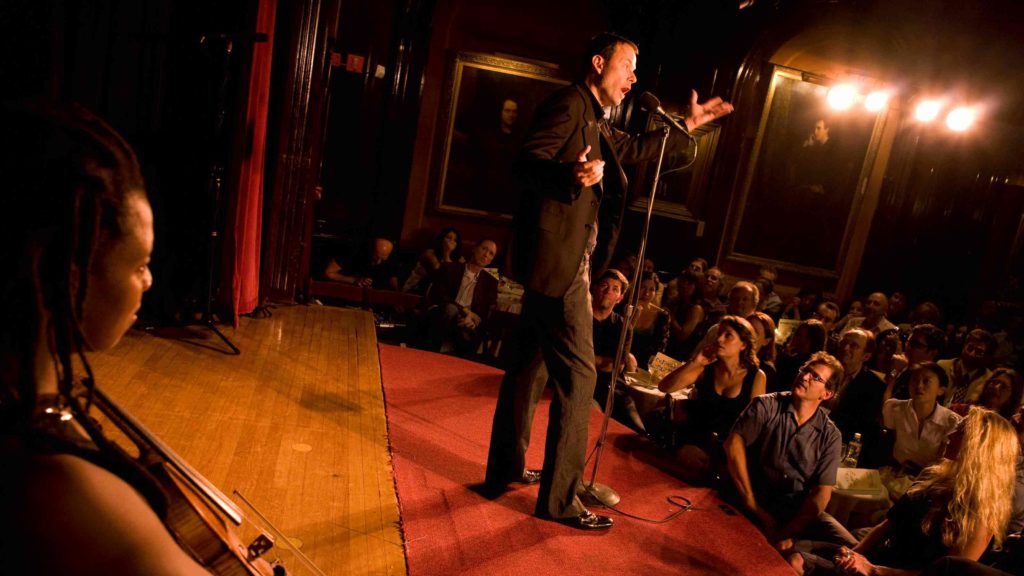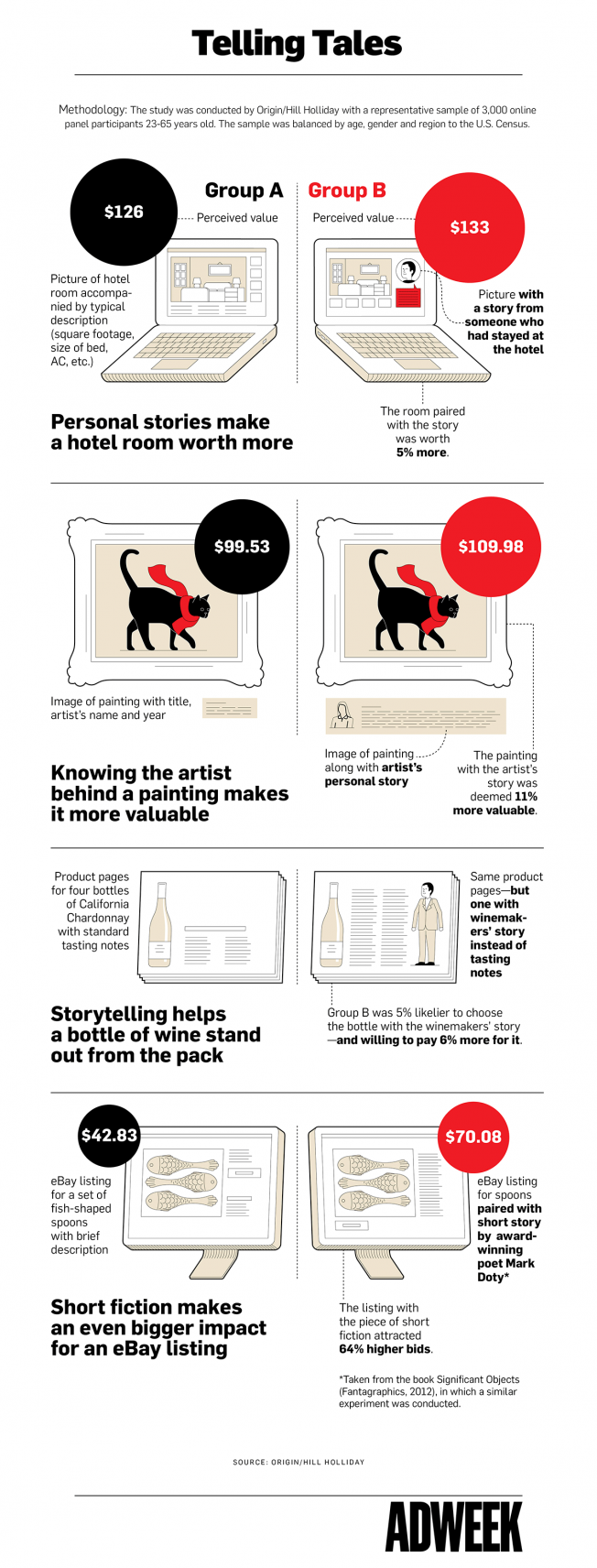
These days, it seems like everyone’s involved in the art of storytelling. On the radio, public radio has led the way in creating programs that feature stories that touch on the human condition, some serious and some frivolous.
NPR’s StoryCorps is all about giving listeners a chance to tell their stories. And PRX’s The Moth is a brilliant example of user-generated content, as regular people take the stage to tell their tales in a setting that borrows from the standup comedy platform. It’s often hard to tune out from The Moth’s brilliantly curated stories and the people who are so adept at spinning yarns that are both personal and poignant. They bring the show to markets all over the country via “Story Slams,” their version of “open mic” nights that attract thousands of would-be storytellers to ply their craft.
In many ways, This American Life was at the center of the storytelling movement on public radio. While it’s been around for more than 20 years, host Ira Glass is credited for being a storytelling pioneer. Each week, the show takes on a theme, accompanied by sound effects, quotes, music, and other production elements that help make these stories come to life on the radio. Glass’ quirky style is part of the charm that has made TAL a storytelling standout.
TED Talks is another version of storytelling, bringing compelling speakers from all walks life to the stage to present their philosophies, stories, and experiences. This is storytelling at its best, archived on the web, providing resources that are much like a library of smart thinkers. You could get an education from simply watching this brilliantly curated videos of some of the best and brightest storytellers. The video below, featuring Margaret Heffernan, is one of my favorite stories about competition in business.
Not surprisingly, it was NPR that introduced the radio version, The TED Radio Hour, back in 2012. It is one of their most successful weekend shows – and podcasts.
Now, storytelling is going well beyond the media, becoming a part of businesses eager to go beyond the numbers. Brands of all stripes are hiring writers and video producers to tell their stories – sometimes in novel ways. Marketing Dive recently reported on a new Starbucks initiative focusing on stories about the people who walk into their coffee shops to buy a beverage.
Their 7-episode campaign debuted late last year. It’s called “1st & Main,” and it’s in an animated format, thanks to a group of writers from The Simpsons. The idea is that “every table has a story.”
Beyond branding, companies are also discovering that storytelling sells. A new infographic from Hill Holliday, a major ad agency, caught my attention. Their research arm, Origin, constructed a fascinating experiment to determine whether there is an actual return on investment based on effective storytelling.
A national study set up different online ads for various products, comparing fact-based ads versus stories about products and brands. The differences – shown in the infographic below – support the value of the storytelling format. As Origin’s SVP research, Ilya Vedrashko told Adweek, “Stories move not only people, but they also move product.” Now some may look at these examples and conclude there’s nothing new here, because so many so-called “storytelling” ads are simply testimonials, an advertising form that’s been around for centuries. While that may be true, the difference here is that there’s behavioral evidence in the metrics suggesting that a personal touch effectively generates commerce.
Now some may look at these examples and conclude there’s nothing new here, because so many so-called “storytelling” ads are simply testimonials, an advertising form that’s been around for centuries. While that may be true, the difference here is that there’s behavioral evidence in the metrics suggesting that a personal touch effectively generates commerce.
For a radio industry obsessed with the notion that “We need to do a better job telling our story,” a raft of statistics and rankers simply pales in comparison to personal stories. This is why every U.S. President since Reagan has gone to the trouble of bringing real people to those State of the Union speeches. Unemployment data is dry and boring. Putting a face on Americans who have succeeded in the job market is more compelling, believable, and memorable.
Whether it’s the creation of radio ads or the industry’s efforts to better position itself in the minds of advertisers and agencies, a storytelling approach is the more effective way to go. We enjoy hearing stories rather than being barraged with stats and charts.
Remember, it’s an ad agency – Hill Holliday – that commissioned this study.
Tell them radio’s story.
- What To Do If Your Radio Station Goes Through A Midlife Crisis - April 25, 2025
- A 2020 Lesson?It Could All Be Gone In A Flash - April 24, 2025
- How AI Can Give Radio Personalities More…PERSONALITY - April 23, 2025




This particular Ted Talk is very timely and applicable.
Having said that: it seems like storytelling in the Ted context is more like a lengthy, uninterrupted monologue with high rhetorical quotient.
If you’re in a selling situation, you are absolutely _not_ continuously lecturing. You’re engaging your partner. Ideally, with something more interactive than a lengthy speech. And: you’re allowing yourself to be engaged as well.
Opportunities for “real time” involvement of your story will help your partner feel like he or she is more than a fern in a set-piece.
And, you might just get the sale!
Angela, thanks for the comment. That particular TED Talk is one that I especially enjoy. I agree that stories are more effective when they’re interactive, especially one-to-one sales. But the examples here from Origin are actually web ads (and they work). My point is that stories, in general, can be more compelling than just data points (rankers, trenders, etc.). And it’s nice to have a piece of research that actually backs that up. Appreciate you reading our blog.
The data that I am seeing and reading about here is encouraging. From my experience and perspective, though, storytelling seems to resonate most with the educated and not with the mass audience. This mass audience are the ones that find things like Twitter appealing due to the fact that the message will never be longer than a set parameter. This mass audience like their news in sound bites and seem to not have the time and patience to listen and pay attention to a story develop and would be rather content in developing a mindset regarding a story based on whatever bits and pieces they have picked up on rather than getting to know all the facts.
If it sounds like I am venting on the state of broadcast news, I am. The mass audience seems to gravitate to their news sources much like they gravitate towards their respective religions; as a means to justify their own views and opinions. If their view is conservative, they will listen to, absorb and quote what they want to hear from say, Fox News. Whereas, if their view is a bit to left, they will get and base their opinions on sound bites from the more mainstream, traditional liberal media.
I seriously hope that the audience for “storytelling” when it comes to broadcast news continues to grow. There are many Americans looking for truth out there and if they are committed to working to find the truth, they will commit more of their time to hear the “story” and not just the sound bites.
Kurt, there’s no question that attention spans are shrinking, so stories need to be crisp, smart, and compelling. Regarding the news angle, it’s an entirely different story. As you suggest, people embrace the stories and facts that justify their positions. The more those stories reinforce one’s point of view and their level of entertainment, the more effective they are. Thanks for commenting.